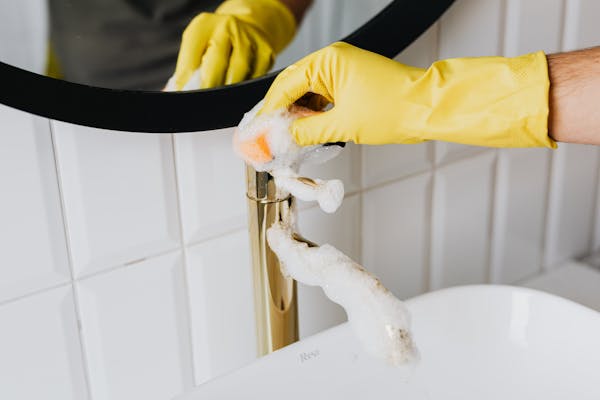
Employee productivity and well-being depend on a hygienic and sanitized workplace. However, without a set Home Move In Cleaning schedule, maintaining a properly cleansed commercial environment may be difficult. This paper provides ten fantastic ideas for keeping a clean workspace that promotes employee well-being. Using these recommended procedures can help create a safer and more efficient work environment. These activities include routine dusting, comprehensive floor maintenance, and disinfecting high-touch surfaces.
Dust Regularly
Dust is made up of tiny skin cells, fabric fibers, hair, and other allergens that get disturbed in the air we breathe. Over time, dust accumulates on surfaces like desks, shelves, fixtures, TVs, computers, etc. Regular dusting at least once a week helps remove these particles from the air and surfaces before they build up. Professionals can use microfiber cloths and feather dusters to capture even microscopic dust.
Disinfect High-Touch Surfaces
Common surfaces like doorknobs, light switches, handrails, keyboards, phones, faucets, and fridge handles are touched multiple times daily by many people. Disinfecting these high-touch points helps eliminate germs, bacteria, and viruses that can cause illness. Using disinfectant wipes on a daily basis helps curb the spread of bugs in a shared office environment.
Empty Trash Daily
Full or overflowing trash bins attract pests and can become smelly. Daily waste disposal in common areas prevents this. It also helps maintain a neat and tidy space. Outdoor trash needs to be properly secured from animals.
Clean Flooring Thoroughly
Vacuuming carpets removes dirt prolonging lifespan. Hard floors shine under machine scrubbing. Grime hiding carries pollutants compromising air quality. Professionals deep clean thoroughly. Dirt and debris on carpets and other flooring harbor allergens and bacteria. Thorough vacuuming removes embedded dirt while mopping hard surfaces with a cleaning solution disinfects and removes stains. This improves indoor air quality.
Mop Spills Quickly
Moisture activates mold growth on surfaces overnight otherwise. Immediate cleanups prevent damage. Prompt attention avoids potential health issues from spreading dampness or slips on wet floors. Food or liquid spills left unattended can cause slip hazards and mold/mildew growth. Prompt cleaning within 15-30 minutes of any spill prevents such safety and health issues.
Scrub Bathrooms Deeply
Foul odors indicate thorough scrubbing necessity. Removing mineral deposits freshens spaces. Disinfected toilets, sinks, and showers support sanitized facilities minimizing the spread of illnesses.
Wash Interior Windows
Grimy panes dim interior light worsening moods and focus. Sparkling glass uplifts outlooks. Bright, reflective surfaces open space mentally and emotionally. Task lightens the atmosphere.
Duct Vents and Air Filters
Clogged systems work harder spreading recycled allergens throughout the day. Changing filters on schedule keeps air circulating cleanly. Professional duct cleaning deep cleans systems.
Rearrange Furniture Periodically
Stagnant layouts invite slacking. Rotating seating fosters collaboration instead. New perspectives stimulate creativity without the distraction of unchanged views daily.
Conclusion
In conclusion, establishing an effective commercial cleaning routine based on the tips discussed is a worthwhile investment that pays dividends in staff health, morale, and output. While daily and weekly disinfection needs dedication, it only takes a small effort from all employees to make a big difference. For heavier tasks, professional cleaning services can ensure standards are rigorously maintained. A conscientious approach to sanitization fosters a comfortable work environment where illnesses are less likely to disrupt business operations. Most importantly, the well-being of employees is prioritized through a commitment to workplace cleanliness.
